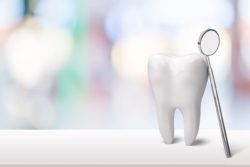Cavities refer to an early form of tooth decay that affects a majority of dental patients at some point in their lives. You likely know that dental decay eats away at your teeth, hurting their structure irreversibly.
Though enamel, the outer layer of your teeth, sustains permanent harm from cavities, it can erode due to other reasons too. Tooth decay and enamel erosion refer to separate issues that can both hurt your dental structure.
Knowing more about these issues can help you to preserve the look and feel of your smile. Read on to learn more about the differences between the dental problems of enamel loss and tooth decay.

Enamel Erosion Refers to Structural Tooth Damage
Enamel acts as a hard protective shield over the more vulnerable inner layers of the tooth. Though durable, it can wear down over time, and once gone, the enamel will not regrow. A dentist can use restorative dental tools to replace lost enamel though, recreating this shield and protecting the tooth again.
Patients with enamel loss might feel tooth sensitivity because the exposed interior of the tooth has nerves that transmit pain signals when stimulated. Replacing weak enamel will cover these nerves and stop this painful symptom. The dentist might use a dental crown to achieve this purpose.
Enamel erosion can occur for a number of reasons, including wear and tear from age. But chronic behaviors like teeth grinding generate pressure that will damage the teeth at a faster rate.
This dental damage can also occur due to poor oral hygiene. Make sure you brush your teeth at least twice each day, floss daily, and visit the dentist for routine cleanings to get rid of plaque in a timely fashion before it harms your teeth.
Your diet will also contribute to enamel loss, so be careful when consuming acidic foods and drinks. Steer clear of sugary items too because sugar becomes acidic when it reacts with saliva. These foods can then eat away at your smile, leaving irreversible damage.
Bacteria Create Tooth Decay
Tooth decay develops when bacteria penetrate weak enamel and start to eat away at the dental structure. It occurs when enamel erosion has already begun and worsens this damage to the teeth. You will need intervention from a dentist to get rid of decay and stop it from spreading.
Cavities are the early stage of tooth decay, which will leave a hole in the enamel. A dentist will drill away the decayed part of the tooth and fill the hole with resin.
More advanced decay will still need to be drilled, but a dental filling might not be enough to restore the tooth’s structure. The dentist can employ a dental crown to cover and protect the tooth when treating severe decay.
Tooth decay does not always have noticeable symptoms, though some patients might feel pain or spot discoloration in the affected tooth. A dentist can diagnose decay during a routine exam and provide prompt treatment to restore your oral health.
